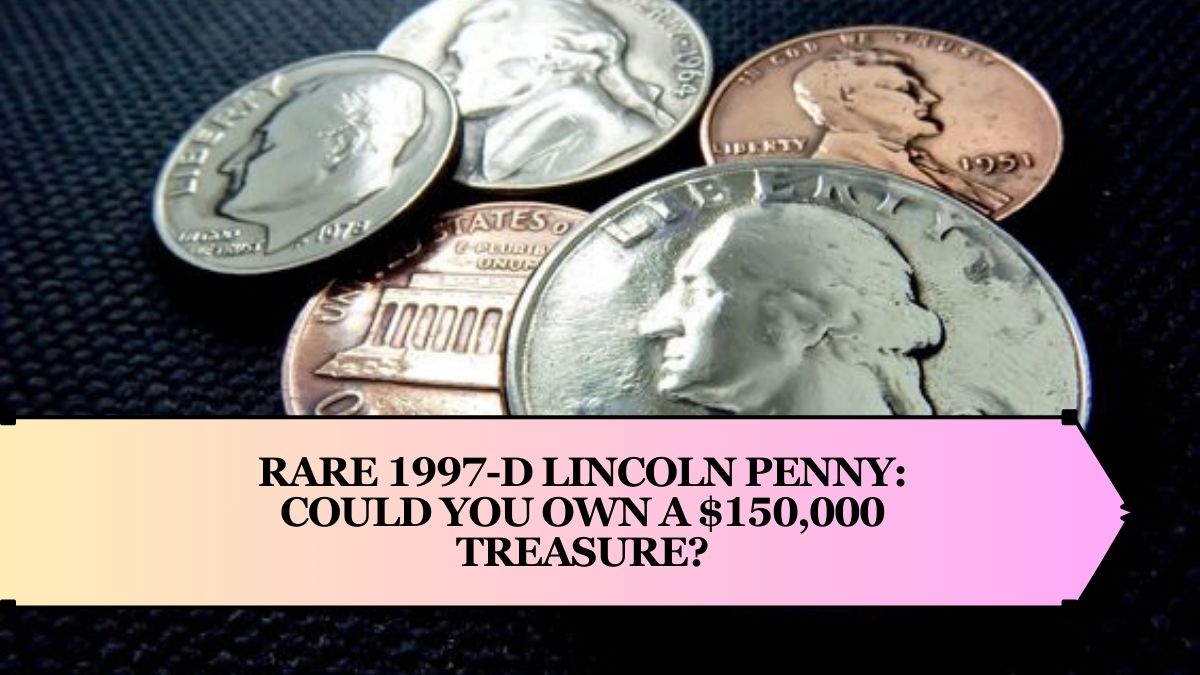The world of coin collecting is full of exciting stories, and one of the most incredible is that of the 1997-D Lincoln penny. This ordinary-looking coin surprised collectors when one sold at auction for a staggering $150,000. What makes it so valuable? In this article, we’ll explore the unique features that made this penny worth so much and offer tips for spotting valuable coins.
What Makes the 1997-D Lincoln Penny Special?
The 1997-D Lincoln penny was minted at the Denver Mint and is part of the Lincoln Memorial cent series. Most pennies from this series look alike and hold little value beyond one cent, but a few unique factors make some of these pennies extraordinarily valuable.
Key Factors Contributing to Its $150,000 Value
- Minting Errors and Varieties
Minting errors often increase a coin’s value because they make it rare and unique. The 1997-D Lincoln penny has a rare “Doubled Ear” variety caused by an error during production. This error, where Lincoln’s ear appears doubled, makes the coin highly desirable among collectors. - High-Grade Condition
Coin grading plays a major role in determining value. This 1997-D penny was graded as MS69 Red (RD), meaning it is in nearly perfect condition with a bright red color. The better the condition, the more valuable the coin. - Rarity and Demand
Although billions of 1997-D pennies were minted, few with the “Doubled Ear” error exist in high-grade condition. The rarity combined with collector demand has pushed the value of this penny to $150,000.
Understanding Coin Grading and Its Impact on Value
The grading of coins can affect their value significantly. Coins are graded on a scale from 1 to 70, with higher numbers indicating better preservation. For copper coins like the 1997-D penny, color grading is also important:
- Brown (BN): Indicates a coin that has lost its original color.
- Red-Brown (RB): Shows a mix of original red and brown toning.
- Red (RD): Retains nearly all original red color, highly prized among collectors.
The 1997-D Lincoln penny’s grade of MS69 RD makes it extremely rare and valuable. Few examples have been found in such pristine condition, adding to the coin’s appeal.
Notable Features of the 1997-D Lincoln Penny
| Feature | Description |
|---|---|
| Year of Minting | 1997 |
| Mint Mark | D (Denver Mint) |
| Composition | 97.5% Zinc, 2.5% Copper |
| Notable Error | Doubled Ear Variety |
| Grade | MS69 Red (RD) |
| Auction Sale Price | $150,000 |
| Known Examples | Very Few |
| Significance | One of the highest-graded Doubled Ear coins |
The Market for Rare Lincoln Pennies
Lincoln pennies have produced many valuable rarities. Examples include the 1943-D Lincoln Wheat cent in bronze, which sold for over $1.7 million, and the 1958 Doubled Die Obverse penny, valued around $150,000. These prices show that error coins or rare high-grade pennies can become valuable treasures.
| Rare Lincoln Pennies | Auction Value |
|---|---|
| 1943-D Bronze Penny | Over $1.7 million |
| 1958 Doubled Die Penny | Around $150,000 |
| 1997-D Doubled Ear Penny | Up to $150,000 |
These sales highlight how a seemingly common coin can reach an impressive value, particularly with unique features and high-grade preservation.
FAQ’s
What makes the 1997-D Lincoln penny so valuable?
The rare “Doubled Ear” error and its high-grade condition make it valuable.
How can I tell if my penny has the “Doubled Ear” error?
Look closely at Lincoln’s ear; if it appears doubled, it might be the rare variety.
Where can I get a coin graded?
Several organizations, like PCGS and NGC, specialize in grading coins for a fee.
Does every mint error make a coin valuable?
Not all errors add value, but unique or rare errors often do.
How should I store valuable coins?
Keep them in a cool, dry place, preferably in protective coin holders.

